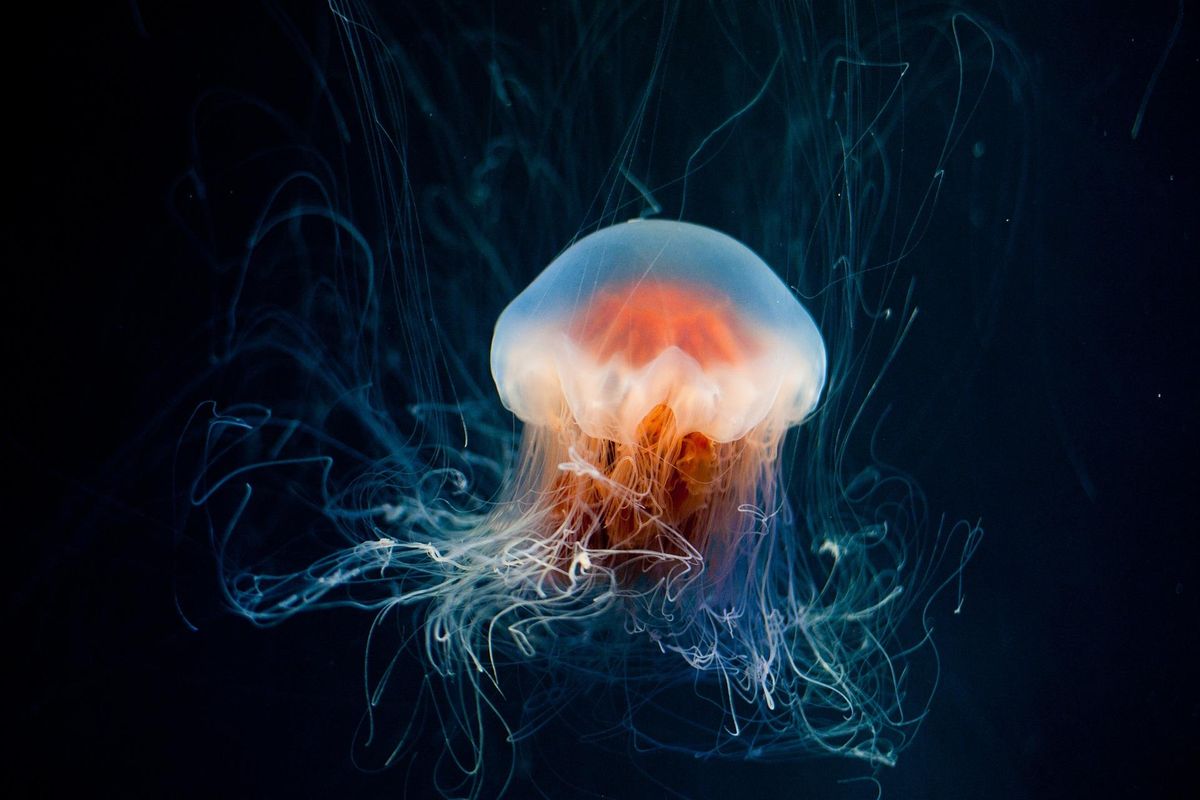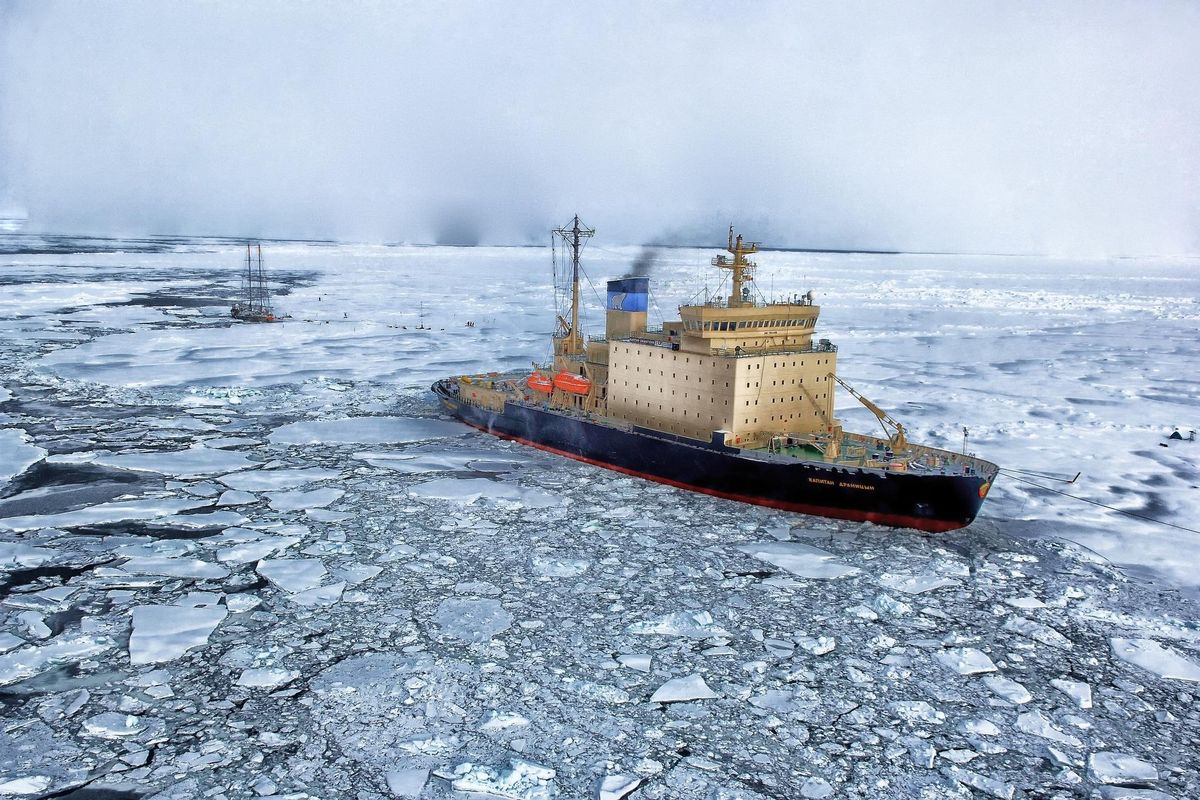Marine biologist explains what happens to the wildlife during the Arctic "polar night"
Winters aren't as dormant as we think they are.

The aurora borealis at night in the Arctic.
Professor Jørgen Berge always thought animals, like people, preferred to spend their winters dormant.
Berge is a marine biologist and zoologist at the Arctic University of Norway and the University Centre in Svalbard, which means he's used to those long, dark winters where the sun literally does not rise for anywhere from 23 to 176 days.
This phenomenon is known as a "polar night," which means that no part of the sun's disc is visible on the horizon, and it occurs everywhere above the 67° latitude line, including parts of Alaska, the Yukon, the Denmark Strait, and parts of Greenland and Russia.
That might be a good environment for a nasty coven of evil vampires to feast on Arctic townsfolk, but it's probably less good for non-undead organisms that thrive on sunlight and warmth.
...right?

And I thought my winter ennui was bad.
As it turns out, those cold polar nights are a hotbed of activity — particularly in the Arctic Ocean.
"We have basically assumed that when it is dark, there is no primary production and there is no activity. The system is just waiting for the light to return," Berge said in a recently published article in the Journal of Cellular Biology.
But he and his fellow researchers were inspired to take a second look after a chance encounter in a Svalbard fjord in the winter of 2013.
"Above us was a starry, winter night and below us were countless blue-green 'stars' in the deep produced by bioluminescent organisms. The beauty of it was stunning, and the fact that so many organisms were producing light was a strong indication that the system was not in a resting mode," he explained.

Giant jellyfish swim under the ice of the Arctic.
Photo from Pixabay
A team of nearly 100 scientists from seven different nations cataloged the lives of some surprisingly active Arctic animals.
Over three winters, the team led by Professor Berge embarked on underwater filming, biodiversity counts, and analyses of the stomach contents of seabirds and fish.
"Instead of an ecosystem that has entered a resting state, we document a system with high activity levels and biological interactions across most trophic levels," he said.
This activity included:
- scallops and shellfish feeding on the floor;
- krill and zooplankton and other tiny critters all spawning like rabbits in the springtime;
- and auks and guillemots who resisted the urge to head south for the winter and somehow managed to stalk their deep-sea prey in absolute darkness.
"They are not individuals that are left behind and about to die," Berge told the BBC. "They are doing well, they find their food in the dark. Many of them had very full stomachs."
Pretty amazing, right? And all they had to do was look in the one place that no one thought to look before!
And in defense of every other scientist ever, I completely understand not wanting to leave your bed in the middle of a pitch-black Arctic winter to dive through the ice on the off chance that you might find some surprising aquatic activity.

Working at night in the Arctic can be challenging.
Unless ... maybe this overactive polar night is actually something new?
For better or for worse, Berge and his team would not have been able to conduct their research if it hadn't been for the rapidly rising global temperatures.
"If you go back 10 years, the fjords would freeze up at that time of year, and this wouldn't have been possible at all," Berge said. "At the same time, there has been warming. We have less sea ice, we have more influence of warmer Atlantic water masses — and that will also have influenced the system."
Could it be that this influx of activity is actually the result of climate change and the melting polar ice caps?
Well ... maybe.
We can't actually know for sure because there's simply not enough research yet to prove the theory. As far as Berge's team members are concerned, it really could go either way.
"It's surprising to see that the rates are so high — that the level of activity is comparable to what's there in the summer. That is impressive," said Dr. Donatella Zona, an Arctic ecologist at the University of Sheffield. "But it's not very surprising that there is activity during the cold period. The main problem is that there are so few data. It's very hard to quantify, because we are relying on so few measurements."
Granted, correlation is not causation. But climate change is still a serious concern, and it would stand to reason that it might have something to do with this newly discovered aquatic Arctic dance party.
One thing is certain: Climate change is affecting everything from animals to humans to the earth itself.
Regardless of whether climate change has a direct impact (yet) on animal activity in the Arctic Ocean, I think we can all agree that the Arctic environment is a unique and wonderful place full of mystery and life that should be explored.
But things like Arctic drilling are chipping away at that ecosystem at increasingly alarming rates.

Pretty much our relationship with the planet right now
Photo from Pixabay
Let's put a stop to the arrogant actions that threaten to destroy our planet so that we might live to discover more of the wonders our world holds.
- Dark Sky Communities protect the night sky from light pollution - Upworthy ›
- Airbnb host shows guest the northern lights above his cabin - Upworthy ›
- Airbnb host wakes up guest in the dead of night so she wouldn't miss the northern lights - Upworthy ›
- Airbnb host wakes guest in the middle of the night so she doesn't miss the northern lights - Upworthy ›

